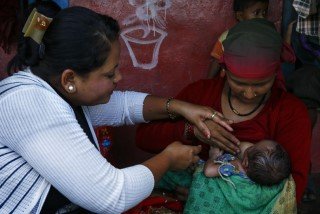The role of birth attendants
What works: Birth attendants and other community level mother support groups trained to support breastfeeding
In Rwanda, the proportion of deliveries with skilled birth attendants more than doubled from 2005 to 2014, with nearly all births in health facilities being assisted by skilled birth attendants. The rates of early initiation of breastfeeding also increased significantly during this time. This progress was in part thanks to new policies instituted by the Government to support breastfeeding in hospitals.
Rwanda now has 45,000 community health workers who counsel mothers about feeding practices and safe deliveries. And while the rate of C-sections nearly doubled from 2010 to 2013, this jump did not impact early breastfeeding – a finding that reveals the power of well-trained health professionals.
What hurts: Outdated practices
While skilled birth attendants have the potential to play a crucial role to ensure new mothers breastfeed their newborns, they may not necessarily do so. If staff members are not trained and facilities have outdated practices – such as separating newborns and mothers without medical justification or giving other liquids or foods to newborns – it may hurt the rates of early initiation of breastfeeding.
Giving mothers all the support they need to start breastfeeding within the first hour after childbirth provides immense health benefits. But we cannot stop there. Mothers should have the freedom to continue to breastfeed for as long as they choose. It’s our collective responsibility to remove the barriers in our society that make breastfeeding so difficult.
Average Rating: ☆ ☆ ☆ ☆ ☆ (0 reviews)





